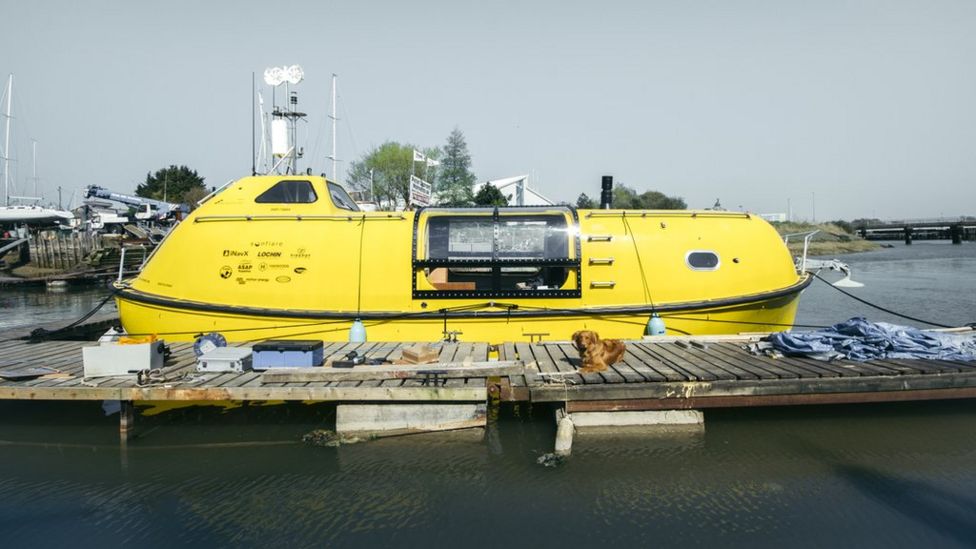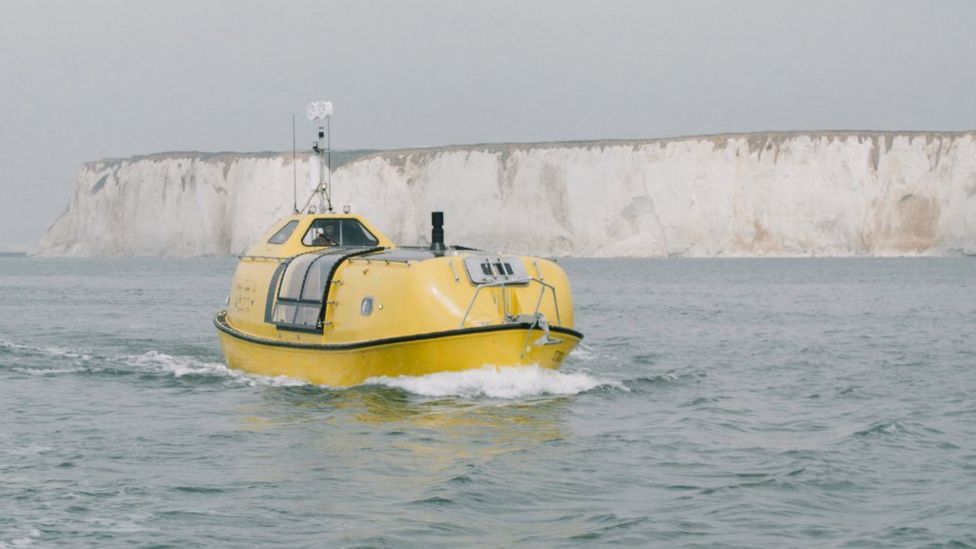Two men and a dog chasing an Arctic dream in a lifeboat
In February 2018 two young architects bought a retired
Scottish lifeboat and converted it into a self-sufficient expedition
home. After a 5,000km (3,100 miles) journey to the Arctic Circle with a
dog named Shackleton, their adventure continues.
For 20 years it was known as Clansman Lifeboat No. 1. It was 11m (36ft) of orange fibreglass, capable of carrying 100 people should disaster strike the CalMac ferry MV Clansman on its journeys off Scotland's west coast.
The lifeboat was painstakingly maintained and tested every month but never used in earnest. And two years ago it was decommissioned in favour of new inflatable alternatives.
Lifeboat No. 1 was put up for auction and the winning bid, of £7,000, came from two architects from England.
A tranquil retirement for the old lifeboat was not what they had in mind.
After seven years of architectural training, friends Guylee Simmonds, 29, from Newhaven in East Sussex, and David Schnabel, 28, from Surrey, weren't quite ready to settle down to the nine-to-five life.
They knew each other from university but were now working in separate countries as they completed their professional qualifications. They planned to celebrate with a hiking trip in Norway.
Then Guylee spotted an old escape lifeboat which had been converted to a houseboat on a river. Soon he was hitting the internet, researching. The germ of an idea began to form; why not adapt one of these rugged boats and sail to Norway instead?
On a fine spring day last May, David, Guylee and his Nova Scotia Duck Tolling Retriever, Shackleton, finally set sail from Newhaven, bound for Dover.
The interior still wasn't finished and the last-minute cramming aboard of provisions, skis, fishing rods, kite-surfing gear and other equipment had left the boat unevenly weighted at first.
"It was a bit chaotic," says Guylee. "We hadn't had much time for sea trials. So it was a mixed feeling of anxiety and excitement. But there's not any better feeling than going out on the open sea for the first time in your own boat."
https://www.bbc.com/news/uk-scotland-52395200
For 20 years it was known as Clansman Lifeboat No. 1. It was 11m (36ft) of orange fibreglass, capable of carrying 100 people should disaster strike the CalMac ferry MV Clansman on its journeys off Scotland's west coast.
The lifeboat was painstakingly maintained and tested every month but never used in earnest. And two years ago it was decommissioned in favour of new inflatable alternatives.
Lifeboat No. 1 was put up for auction and the winning bid, of £7,000, came from two architects from England.
A tranquil retirement for the old lifeboat was not what they had in mind.
After seven years of architectural training, friends Guylee Simmonds, 29, from Newhaven in East Sussex, and David Schnabel, 28, from Surrey, weren't quite ready to settle down to the nine-to-five life.
They knew each other from university but were now working in separate countries as they completed their professional qualifications. They planned to celebrate with a hiking trip in Norway.
Then Guylee spotted an old escape lifeboat which had been converted to a houseboat on a river. Soon he was hitting the internet, researching. The germ of an idea began to form; why not adapt one of these rugged boats and sail to Norway instead?
On a fine spring day last May, David, Guylee and his Nova Scotia Duck Tolling Retriever, Shackleton, finally set sail from Newhaven, bound for Dover.
The interior still wasn't finished and the last-minute cramming aboard of provisions, skis, fishing rods, kite-surfing gear and other equipment had left the boat unevenly weighted at first.
"It was a bit chaotic," says Guylee. "We hadn't had much time for sea trials. So it was a mixed feeling of anxiety and excitement. But there's not any better feeling than going out on the open sea for the first time in your own boat."
https://www.bbc.com/news/uk-scotland-52395200






Post a Comment